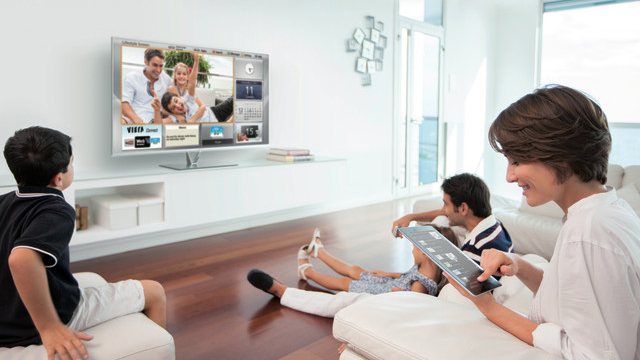Why TV syncing is a huge selling opportunity for advertisers
Taking advantage of second screens is a must

Picture yourself in front of the TV. You might be watching your favourite show, but the chances are you still have your smartphone or tablet to hand to read the news, keep an eye on what your Facebook friends are up to, or check emails – particularly during commercial breaks.
Nielsen research indicates that 84% of smartphone and tablet owners use these devices while watching TV, and second screening is now an integral part of the viewing experience.
As a result second screen users can either be distracted away from the TV ad, or inspired to immediately act upon that ad on a second screen. Second screening can greatly impact the performance of TV advertising, but there is an opportunity for brands to reach both types of viewers and allow them to engage with and respond to TV ads via connected devices.
The living room sync
As distracted consumer eyeballs switch from the TV screen to mobile devices during commercial breaks, TV ad awareness falls significantly. Advertisers need to adapt to this change in consumer behaviour – recapturing viewer attention on the one hand and capturing inspired viewers looking for additional information on connected devices on the other hand – and the most obvious way to do this is through TV syncing.
TV syncing is a relatively new technology that detects a TV commercial the instant it is aired and immediately activates a related online ad campaign across mobile devices within certain proximity of the TV. This real-time detection of an ad being aired is essential, as airings tend to be off schedule by an average of more than five minutes, and advertisers typically have just a three to five minute window to capture the attention of both the distracted viewer and the inspired viewer.
So what exactly is TV syncing, and what advantages does it offer advertisers?
Recaptures viewers' attention
TV syncing allows advertisers to recapture viewer attention lost to mobile devices as the ads displayed on digital screens reinforce the message on the TV screen. It optimises campaigns and allocates advertiser budgets as adverts are actually being seen, and increases ROI as the brand message is far more likely to resonate with the consumer when it is being delivered across multiple screens.
Are you a pro? Subscribe to our newsletter
Sign up to the TechRadar Pro newsletter to get all the top news, opinion, features and guidance your business needs to succeed!
Opens up an engagement channel
Serving online ads that coincide with a TV ad opens up an immediate engagement channel with the viewer, and instead of the consumer having to search for the URL they can directly interact with the ad on their mobile. For example, if a viewer wants to book a test drive for a car shown in a TV ad, TV syncing can make this possible with just one click on the ad. Brands should design online ad creative to make the most of mobile device controls and functionality.
Captures inspired viewers
In the US over a quarter (27%) of TV audiences take a lean-forward approach and research product-related information using connected devices after viewing a TV ad. Inspired TV ad viewers often turn to search engines or the brand's website to seek further information, or with the intention to purchase. Syncing a paid search campaign and the homepage to the TV commercial allows brands to display the advertised products clearly and immediately for the inspired viewer, making a conversion as easy as possible.
Allows cross-screen connected story telling
TV syncing enables a connected storytelling that delivers a unified message to the consumer. This is achieved by showing accompanying display, social or video ads to distracted viewers and capturing TV-inspired searches with the right paid search results. By showing the product advertised on the TV clearly on the brand's homepage, advertisers are able to further increase the relevancy of consumer interactions, as well as presenting consumers with a unified brand experience and simple journey to conversion.
Allows measurement of TV ads
TV syncing allows advertisers to understand the direct impact of TV ads on their website KPIs. Real-time detection is the basis for correct measurement – as 80% of inspired viewers access a brand's website within 90 seconds of an ad airing – and users can be accurately flagged, which is especially helpful for analysing conversions at later dates. Measurement of TV ad performance allows advertisers to test and optimise their campaigns, identifying the best performing TV slots.
In today's multi-screen world, a brand's message needs to be unified and to tell a connected story across all screens – including TV, search, online and social. TV syncing helps brands to achieve this, and is set to become standard practise in the future – transforming TV advertising as we know it.
- Dr Andreas Schroeter is co-founder and COO at wywy